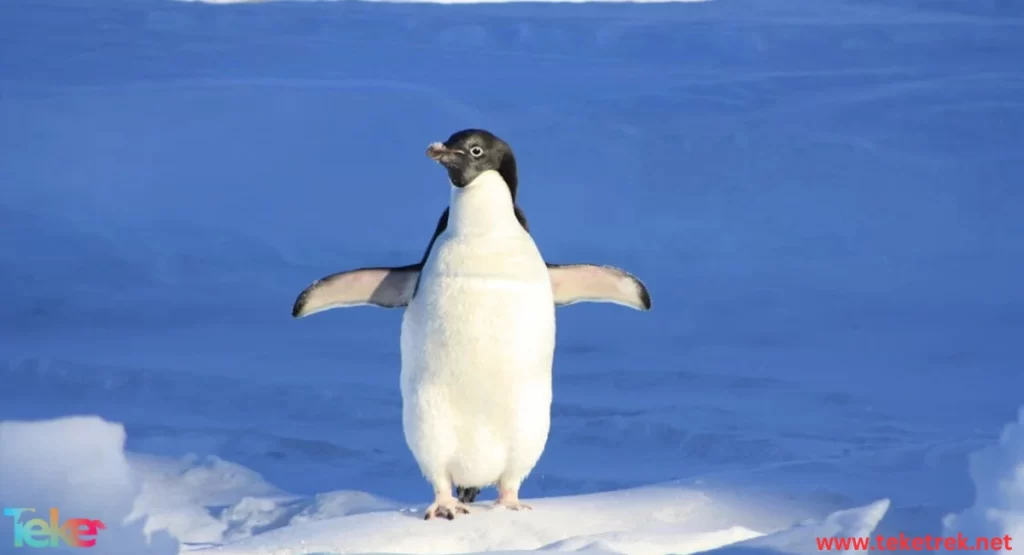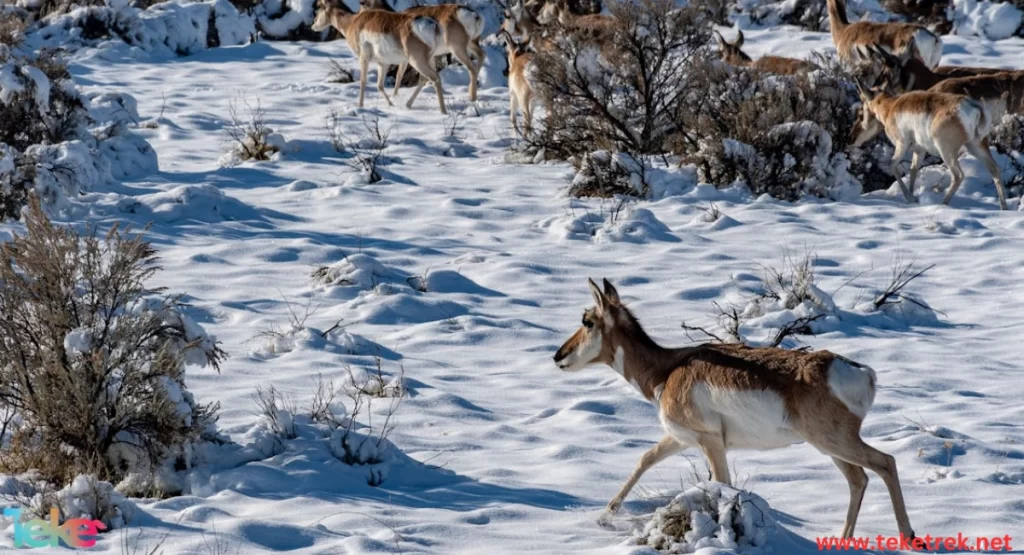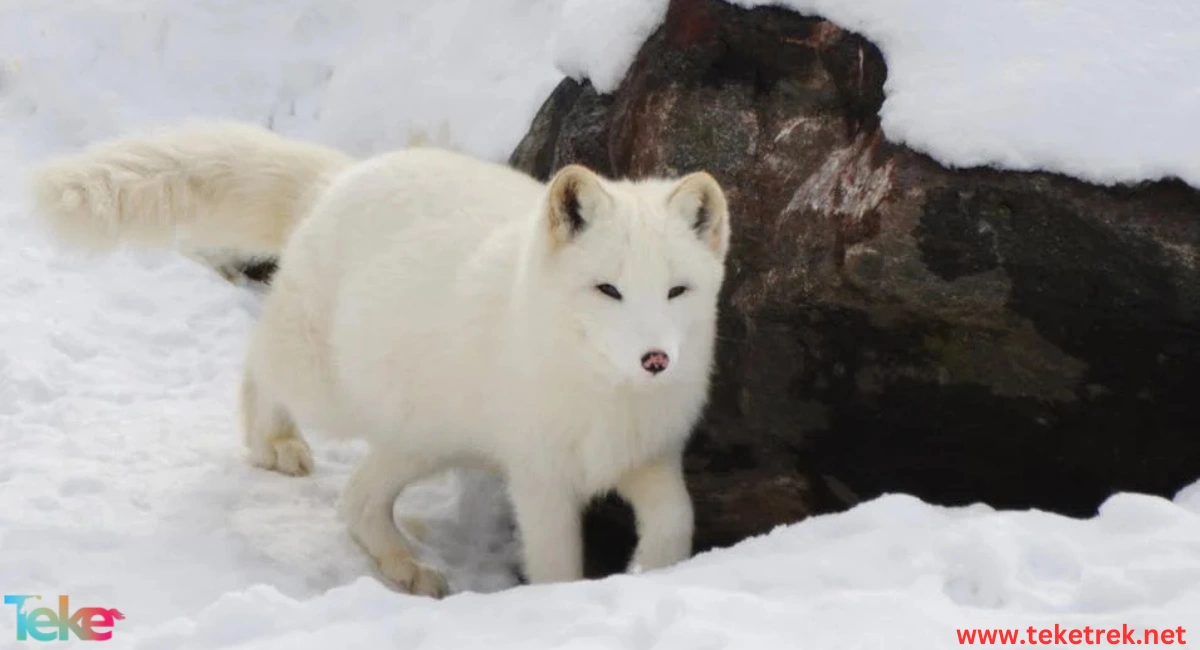In the amazing world of nature, there are animals that are not affected by the cold. These creatures constitute an interesting subject that many wildlife enthusiasts research, as these creatures are known for their ability to withstand extremely low temperatures, thanks to the behavioral and physiological strategies they possess that help them do so.
These animals stand out as a major element in various ecosystems, as they control the numbers of prey and prevent the spread of diseases, thus achieving environmental balance, in addition to their important role in the food chain, being a food source for many animals.
What types of animals are not affected by cold? How do these animals adapt to extreme low temperatures? What is its importance in the ecosystem? Follow the following lines to find out the answers to these questions and see the most important information.
Types of animals that are not affected by cold:
There are many animals that have a great ability to adapt and face various harsh climatic conditions as:
Birds:
The penguin is classified among the list of animals that are not affected by the cold, and can withstand very low temperatures. It lives in the southern regions and adapts to extreme cold thanks to its fatty layers and thick fur that helps retain heat, in addition to the penguin, which is one of the seabirds that depends for its food on marine invertebrates. And small fish, as their thick feathers help them regulate their body temperature.
Mammals:
The polar bear is one of the most famous mammals that live in the Arctic and can withstand extremely low temperatures, thanks to its thick fur and the layer of fat it has under its skin, which helps it provide important thermal insulation, enabling it to survive in areas whose temperature drops to -40 degrees Celsius.
Reptiles:
Polar lizards are creatures that tolerate living in cold environments. Thanks to the strategies they possess, they are able to reduce their metabolic activity, thus reducing their need for warmth and energy during very cold days.
Fish:
There are many fish that live in the depths of cold seas, where temperatures reach freezing temperatures. They tolerate this thanks to their blood containing anti-freeze proteins, which protect them from the formation of ice crystals in their bodies, which helps them survive in these environments.

The mechanism of adaptation of these animals to the cold:
When talking about animals that are not affected by cold, we must know that this is thanks to amazing mechanisms and strategies that help them maintain their survival within these environments, such as physiological adaptations, which are manifested in the presence of layers of thick fat under the skin that is considered a thermal insulator that maintains body temperature, in addition to fur. The density that some animals have, and the anti-freeze proteins that fish have.
The matter is not limited to physiological changes, but extends to behavioral adaptations, such as penguins that form large groups in order to share warmth and reduce its loss. We also see polar bears that resort to digging burrows to keep warm or live in caves to protect them from the wind, in addition to wolves that hunt freely. Collectively to secure its food and regulate its energy, the raccoon, this gentle creature, resorts to hibernation or we see it as inactive in order to conserve its food and energy.
https://teketrek.net/the-galapagos-penguin/
Examples of specific adaptations of several animals that are not affected by cold:
We also pointed out that there are many animals that adapt to extreme cold, so we will mention to you examples of the most prominent of these animals and the methods they adopt to adapt to harsh climatic conditions:
polar bear:
The bear is able to adapt to harsh climatic conditions thanks to its possession of a thick layer of hair that is characterized by its white color, including some that are transparent and allow light to suffocate. The task of this layer is to provide warmth and protect it from being affected by the cold. It is also one of the methods of camouflaging predatory animals. In addition, the polar bear has a layer of fat under the skin. Its thickness reaches 11.4 cm, in addition to its large feet that enable it to walk on ice, and its strong sense of smell that enables it to smell the scent of prey for a distance of up to 32 km, and more. Other coping methods.
https://teketrek.net/indian-runner-ducks/
Penguin:
Penguins live in the coldest environment, which is Antarctica, where they can withstand temperatures of up to 40 degrees thanks to the thick and short feathers of these animals. They contain small pores that tightly trap air, and they secrete oil that works to clean themselves through a gland located in The beginning of the penguin’s beak, in addition to forming an insulating layer that protects it from water.

Its importance in the ecosystem:
The presence of animals that are not affected by cold is necessary to preserve the ecosystem, as they are one of the most important parts of the food chain. They work to regulate the amount of predators, and thus preserve natural resources from increasing consumption. For example, polar bears feed on seals, thereby regulating their number. As for penguins, they depend on small fish for their food, which leads to a balance in the marine ecosystem.
The role of animals that are not affected by cold is not limited to environmental balance, but also maintains biodiversity within polar environments. They play an important role in the food chain, and also provide food opportunities and habitats for other animals, thus achieving the integrity of ecosystems.
At the conclusion of our talk about animals that are not affected by cold, we conclude how intelligent these creatures are and their ability to maintain their survival in the most difficult environmental conditions by following amazing strategies. Therefore, we must preserve them and protect them from the climatic challenges that threaten their survival, by preserving their natural environments.





